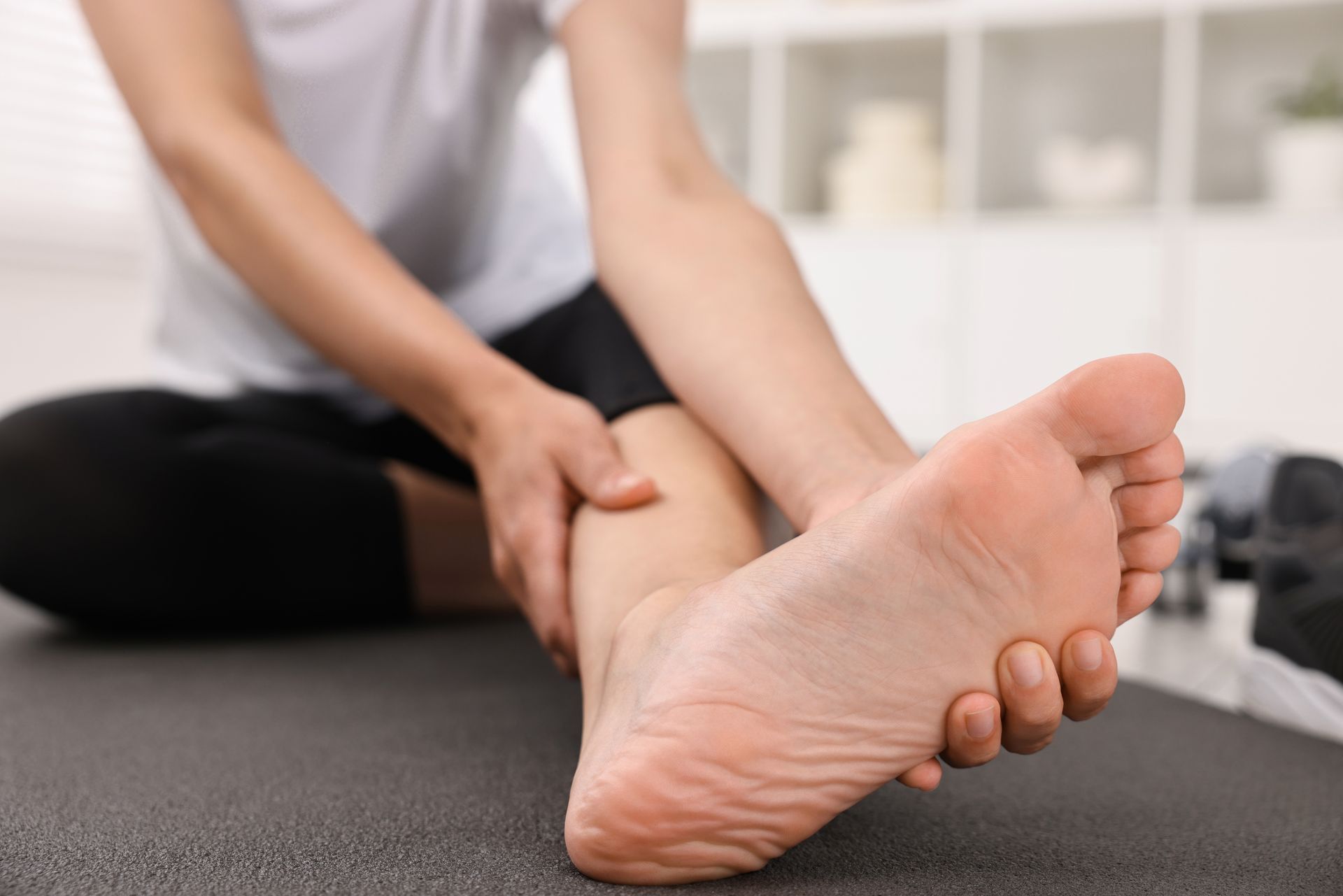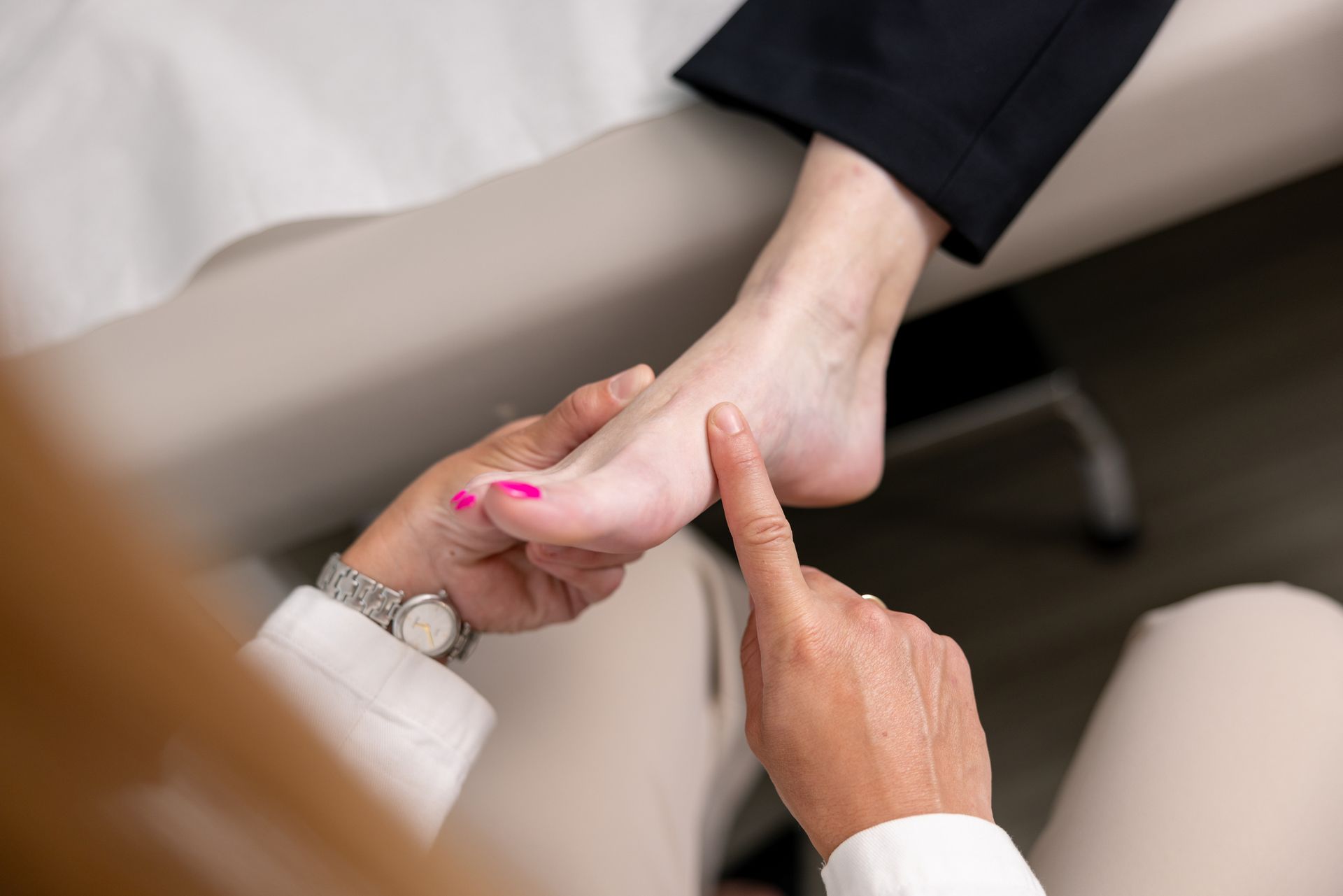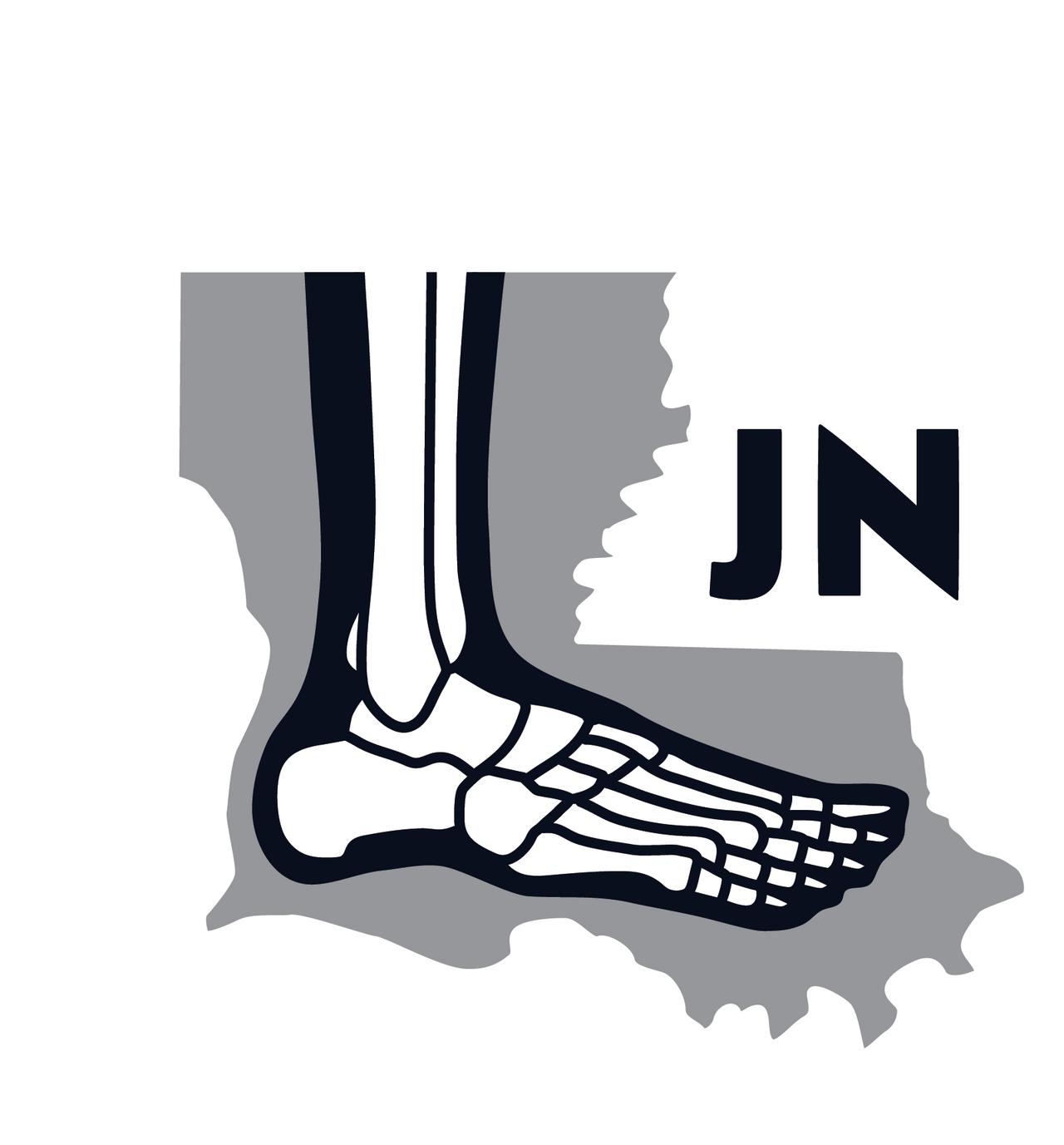ACHILLES TENDON RUPTURE specialist
A Trusted Achilles Tendon Surgeon in Baton Rouge
RELATED PAGES
What is an Achilles tendon rupture?
An Achilles tendon rupture is a significant orthopedic injury impacting the Achilles tendon, a robust fibrous cord at the back of your lower leg. This tendon is crucial, linking the calf muscles to the heel bone. When subjected to excessive strain, the Achilles tendon can either partially or entirely tear, termed a rupture.
What are the symptoms of an Achilles tendon rupture?
Several indications signal an Achilles rupture. One of the most distinguishing symptoms is hearing a distinctive "pop," immediately followed by intense pain in the ankle's rear and the lower leg. This pain is typically so severe that it hampers one's ability to walk correctly. Such injuries are commonly associated with recreational sports but can affect anyone, irrespective of their athletic involvement.
Is it possible to still walk with a ruptured Achilles tendon?
Walking with a torn Achilles tendon is possible, but it isn't advisable.
Walking with a torn Achilles varies based on the injury's extent. Individuals with a partially torn Achilles tend to experience a range from mild discomfort to significant pain, especially when attempting to push off with the foot. While pain from minor tears may diminish quickly, it doesn't necessarily mean the tendon has fully healed.
When there's a complete rupture of the Achilles tendon, walking becomes considerably challenging. This altered stride occurs because the damaged Achilles, which connects the calf muscles to the heel, can no longer facilitate push off or support efficient calf muscle movements.
Following an Achilles injury, individuals with partial tears can resume walking gradually. In contrast, those with complete ruptures often require a protective boot for 6 weeks, bearing weight on the foot only when safely secured. Oftentimes, Dr. Neumann will recommend you consult with a physical therapist specializing in Achilles injuries for a personalized recovery approach.
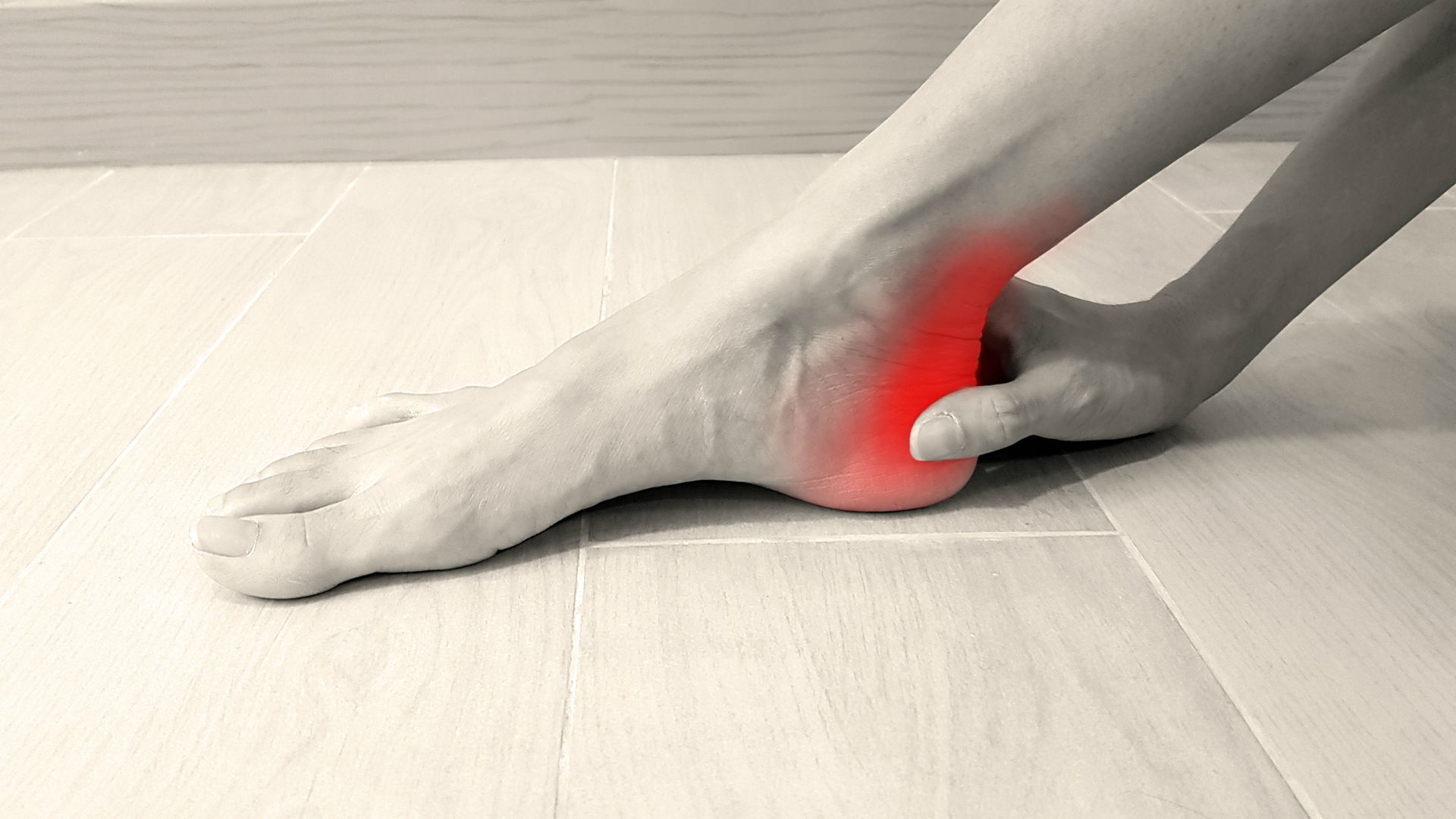
Who treats an Achilles tendon rupture?
An orthopedic surgeon specializing in the foot and ankle, such as Dr. Neumann, treats an Achilles tendon rupture and any related injuries.
What is the cause of an Achilles tendon rupture?
The Achilles tendon, though strong, can succumb to partial tears or complete ruptures when subjected to extreme stress. These injuries often result from sudden increases in strain, such as heightened sports activities involving jumps or traumatic events like falls or a misstep into a hole. Despite its strength, the tendon is especially vulnerable just above the heel bone when exposed to abrupt forces.
How is an Achilles Tendon Rupture Diagnosed?
A physical examination is the primary method used to diagnose a torn Achilles. During this examination, Dr. Neumann might employ various techniques, such as feeling the affected area for swelling or tenderness and checking for spontaneous foot flexion when the area is squeezed.
She may recommend an MRI scan to provide a detailed assessment and ascertain the extent of the injury. This imaging test produces clear visuals of the body's soft tissues, like muscles and tendons, enabling Dr. Neumann to pinpoint whether the rupture is partial or complete, its specific location on the tendon, and to identify any concurrent injuries that might be causing the symptoms.
What are the risk factors associated with an Achilles tendon rupture?
A variety of factors can influence Achilles tendon injuries:
- Demographic Factors: Age, gender, and weight influence injury susceptibility.
- Activity-Related: Both professional and recreational athletes are at risk, especially with inadequate preparation.
- Medicinal Factors: Certain antibiotics and steroids can increase injury risks.
- Systemic Health Conditions: Diseases such as diabetes, thyroid disorders, lupus, and specific types of arthritis can make the tendon more vulnerable.
- Structural and Anatomical Factors: Foot structure, calf muscle strength, and other anatomical conditions can heighten injury probability.
Being aware of these factors can help in injury prevention efforts.
How do you treat an Achilles rupture?
You can address an Achilles rupture through a variety of treatments. Surgery is often the preferred method and can be conducted using several techniques. These surgical options include the traditional open Achilles repair and the percutaneous repair.
Surgery isn't the only option available. Many people have successfully recovered using nonsurgical approaches. The ideal treatment largely depends on the nature and severity of the rupture, along with the goals and medical conditions of the patient.
What are the differences between a partial and complete Achilles tendon rupture?
Understanding the distinction between a complete and a partial Achilles tendon rupture is crucial, as each presents unique symptoms and requires different approaches to treatment and recovery.
A complete rupture refers to the tendon being entirely torn, often accompanied by an audible snap or pop at the moment of injury. This snap results in a significant loss of strength and functionality in the ankle, making activities such as walking or exercising exceptionally challenging. Immediate symptoms usually include pronounced swelling around the ankle, and, in some instances, the calf muscles may appear to retract upward, settling closer to the back of the knee.
On the other hand, a partial rupture does not involve the tendon tearing completely. Instead of a distinct pop or snap, the injury might present mild soreness around the Achilles tendon, resembling a bruise. While there might be some swelling, it tends to subside gradually. Despite the discomfort, the ankle retains functionality, allowing for normal movement.
What are the different types of surgery performed on Achilles tendon rupture?
Percutaneous repair, open repair, and allograft repair tendon transfer are different types of surgery for Achilles rupture.
Percutaneous Achilles Repair
Percutaneous Achilles repair is a surgical technique used for athletes or individuals aiming to return to sports after an Achilles tendon rupture or for those patients with medical conditions which may make wounds difficult to heal. In this procedure, Dr. Neumann makes several small incisions in the back of the heel. Through these incisions, she uses needles and sutures to mend or reconnect the torn portions. The tendon might be attached to the heel bone in certain instances for added stability. This method offers the benefits of reduced wound complications and minimal scarring, but may increase the risk of wound complications.
Open Achilles Repair
In open Achilles repair, Dr. Neumann makes an incision on the back of the heel, locating the partially ruptured tendon or the ends of the completely severed tendon. She then remove any damaged tissue and use high-strength sutures to repair the tear or secure the ends of the severed tendon together. She may attach the tendon to the heel bone with sutures and surgical screws. Sutures are then used to close the incision. The back of your calf may be tender and swollen for several days after the procedure.
Dr. Neumann traditionally prefer the open method because it provides clear visibility. However, this method poses a slightly increased risk of wound-related complications than minimally invasive techniques. Still, this method is often the best option for severe injuries or other complications.
Tendon Transfer
If the Achilles tendon has extensive damage, is completely severed, or is too short to be sewn back together, Dr. Neumann may recommend a tendon transfer. For this procedure, Dr. Neumann repositions the tendon responsible for flexing the big toe. This tendon, known as the flexor hallucis longus, runs along the back of the calf and the inside of the ankle and foot. She uses the same incision to disconnect the flexor hallucis from the big toe and to anchor it to the heel bone using a screw. The tendon is sutured to the Achilles to help reinforce it. She closes the incision with sutures.
You may experience some pain in the calf and ankle and weakness in the big toe immediately after surgery. However, the foot's function remains intact because other muscles that move the big toe take over.
Allograft Repair
An Allograft Repair is a surgical option for Achilles tendon ruptures, using a tendon from a deceased donor. This method is particularly advantageous for athletes, as it avoids the need for grafts from the patient's body, reducing recovery time and surgical trauma.
The procedure involves replacing the damaged tendon with the donor's tendon and attaching it to the heel and calf muscles. This approach generally leads to quicker rehabilitation and a faster return to physical activities. Patients often experience successful outcomes with comparable functionality to a healthy Achilles tendon. However, consult a medical professional to discuss individual suitability and potential risks.
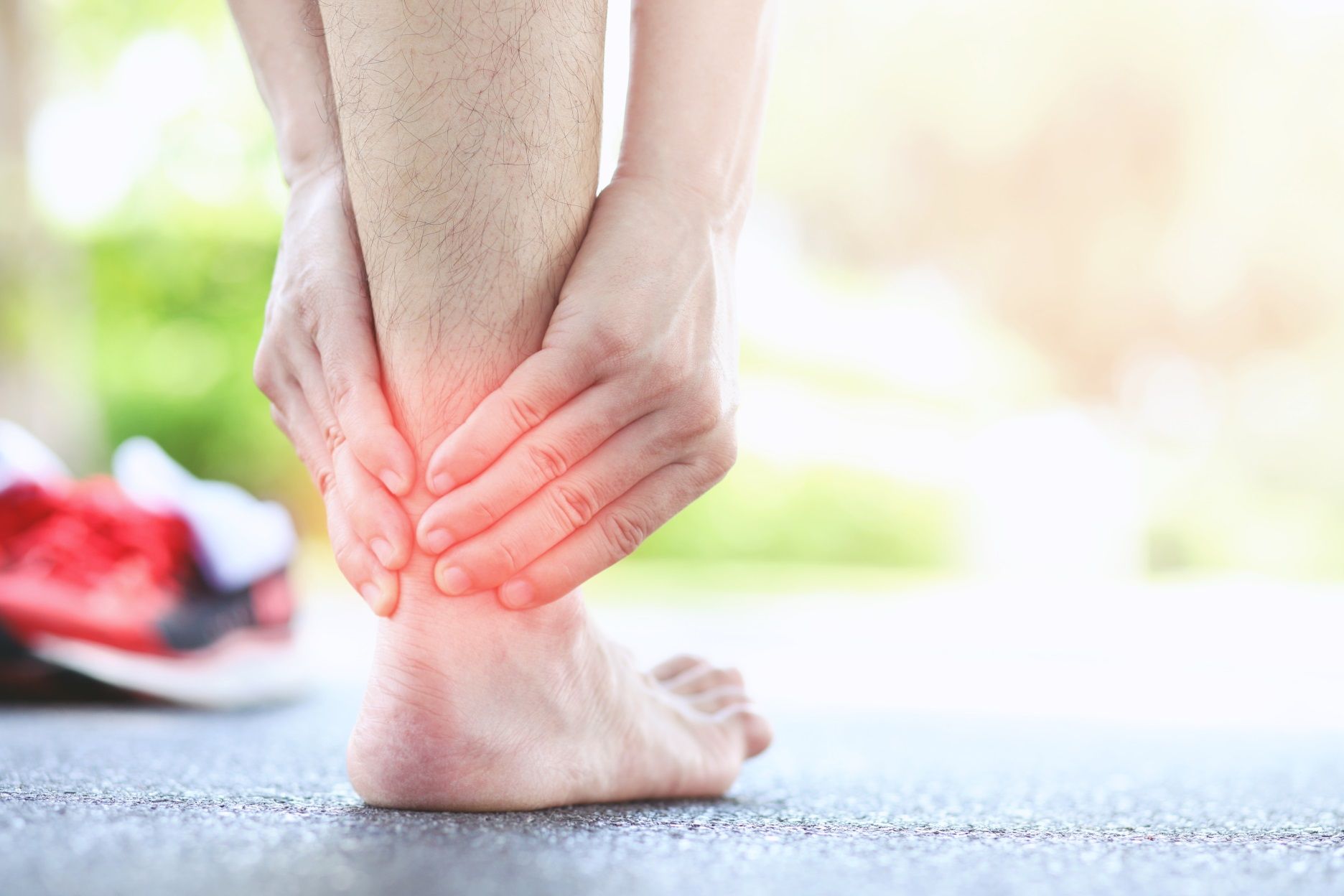
What are the risks associated with Achilles tendon rupture surgery?
Like all surgeries, Achilles tendon repair comes with potential risks, which include:
- Excessive bleeding.
- Nerve damage.
- Infection, with open repairs being particularly susceptible.
- Blood clots in the leg.
- Issues with wound healing.
- Weakness in the calf muscle.
- Complications due to anesthesia.
- Persistent pain in the foot and ankle.
- Reduced range of motion.
- The possibility of re-injury.
It's crucial to discuss these risks with Dr. Neumann, as individual factors like age, overall health, and the specific surgical method used can influence outcomes.
What is the typical recovery from an Achilles tendon rupture surgery?
After Achilles tendon surgery, patients often wear a splint or boot to keep their ankle stable. They are usually observed for a few hours after the operation and then can go home. You can expect pain in the days after the surgery, but medicine can manage it. It's beneficial to elevate the leg to lessen swelling and discomfort. If severe pain or fever arises, contact Dr. Neumann immediately.
You will need crutches or a knee scooter for initial mobility to prevent putting weight on the healing leg. A medical professional removes the stitches about 2-3 week after surgery and may provide a removable boot or cast based on the healing progress.
It's essential to follow recovery guidelines and engage in physical therapy. Although patients may need six weeks of non-weight bearing, full recovery, especially for strenuous activities, can take 9 to 12 months. Always adhere to Dr. Neumann’s medical advice to ensure optimal healing.
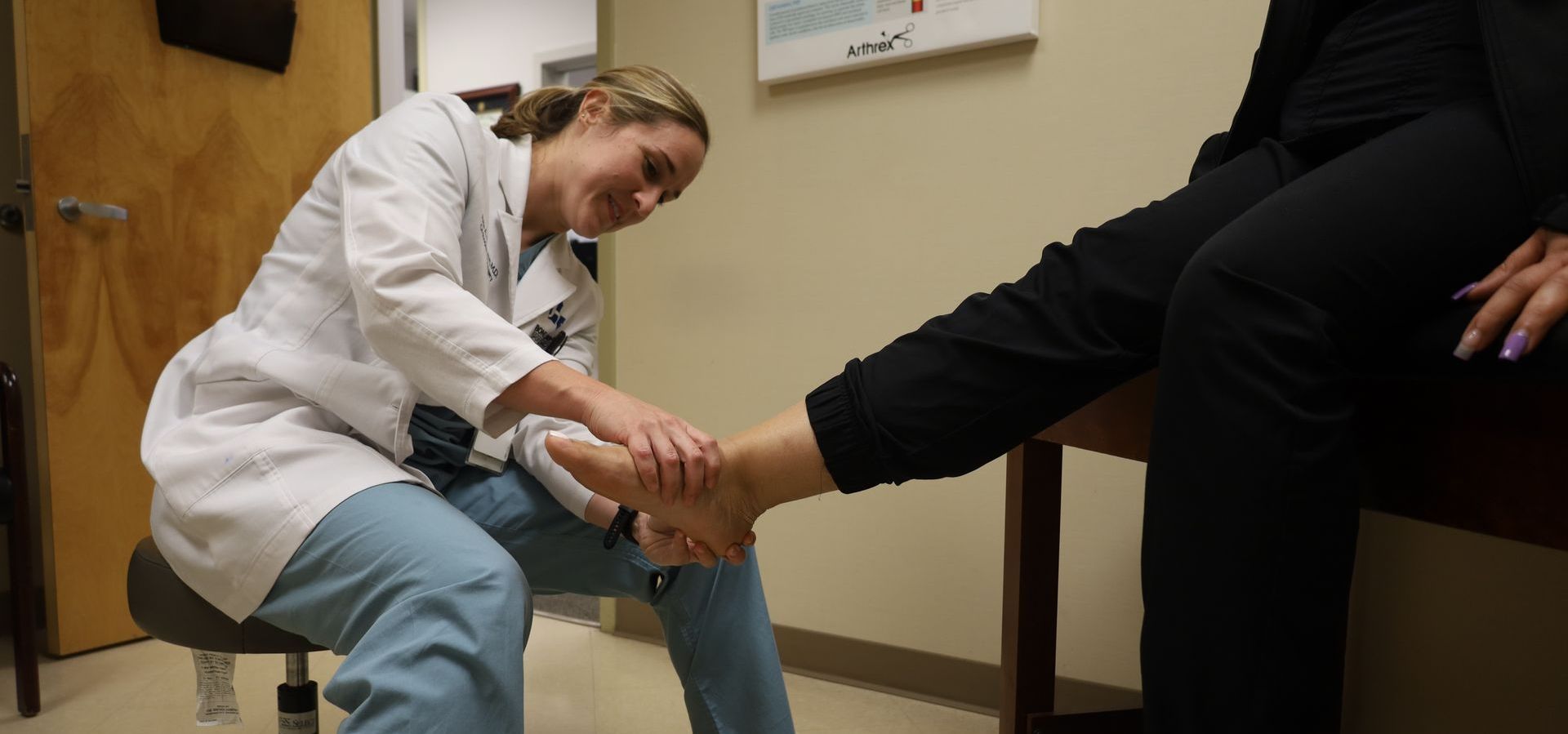
Surgery vs. Nonsurgical Treatment for an Achilles tendon rupture: What determines the plan?
The decision to
treat a ruptured Achilles tendon surgically or non-surgically depends on several factors:
- Age and Activity Level: Younger, active individuals, especially athletes, often prefer surgery for a quicker recovery, while older individuals might opt for nonsurgical treatments.
- Severity of Injury: Complete ruptures might necessitate surgical intervention, whereas Dr. Neumann could manage partial tears non-surgically.
- Health Considerations: Conditions like diabetes or habits like smoking can influence treatment choices due to potential surgical complications.
- Recovery and Rehabilitation: Surgery offers reduced re-rupture risk and potentially better functional results. Still, with proper rehabilitation, nonsurgical methods can also yield positive outcomes.
- Research Trends: Recent studies indicate both surgical and nonsurgical treatments can be equally effective, making the decision more patient-specific.
Ultimately, the choice should be made collaboratively between the patient and Dr. Neumann, considering individual circumstances and weighing the potential risks and benefits.
What preventative measures can one take to avoid an Achilles tendon rupture?
Preventing an Achilles injury is much simpler than dealing with one. Here are a few preventative measures:
- Stretch and Strengthen: Make a habit of stretching your calf muscles and performing exercises like calf raises. These steps help in keeping the muscles and tendons both supple and strong.
- Pace Your Workouts: Avoid diving into intense exercises abruptly. Incrementally add about 10% to your workout's intensity or duration weekly. Prioritize warming up to condition your Achilles tendons and calf muscles for the activity.
- Prioritize Footwear: Research and select athletic shoes that provide adequate heel cushioning. Analyzing your gait at a specialty store is beneficial to ensure your footwear offers the proper support. Remember to replace shoes that show wear and steer clear of hard-running surfaces like concrete.
- Rotate Exercise Routines: Introduce variety into your workout regimen. Swimming or using the elliptical can provide a great workout without straining the Achilles tendon.
- Stay Attuned to Your Body: If you sense any discomfort in the heel or ankle, give yourself a break. Addressing minor issues before they escalate is crucial.
If foot or ankle problems arise, it's wise to consult with a foot and ankle specialist in Baton Rouge, like Dr. Neumann, before it develops into something more serious.
This is a paragraph. Writing in paragraphs lets visitors find what they are looking for quickly and easily.
This is a paragraph. Writing in paragraphs lets visitors find what they are looking for quickly and easily.
This is a paragraph. Writing in paragraphs lets visitors find what they are looking for quickly and easily.
This is a paragraph. Writing in paragraphs lets visitors find what they are looking for quickly and easily.
Dr Julie Neumann did my Achilles’ tendon repair. When it ruptured, I was in so much pain and so afraid. She was very comforting, explained everything and what the recuperation and rehabilitation would entail up front so I knew what to expect. The surgery and recovery went great and I was very happy with Dr Neumann and her staff.
Donna Lambert, Google
I had a great experience with Dr. Julie Neumann and her team after rupturing both of my Achilles tendons while playing basketball. Dr. Neumann was knowledgeable, professional, and answered all my questions throughout my treatment. I highly recommend Dr. Julie Neumann for anyone needing care for Achilles injuries.
Broc Triche, Google
Dr. Julie Neumann is an outstanding doctor! She is attentive and courteous at all times, she is very patient and answers all of your questions! Dr. Julie is also the best surgeon around! She had me walking in a month and a half after a brutal Achilles tear! I highly recommend Dr. Julie Neumann for any injury related to the Achilles heel.
Brandon Obey, Google
All Rights Reserved | Dr. Julie Neumann

